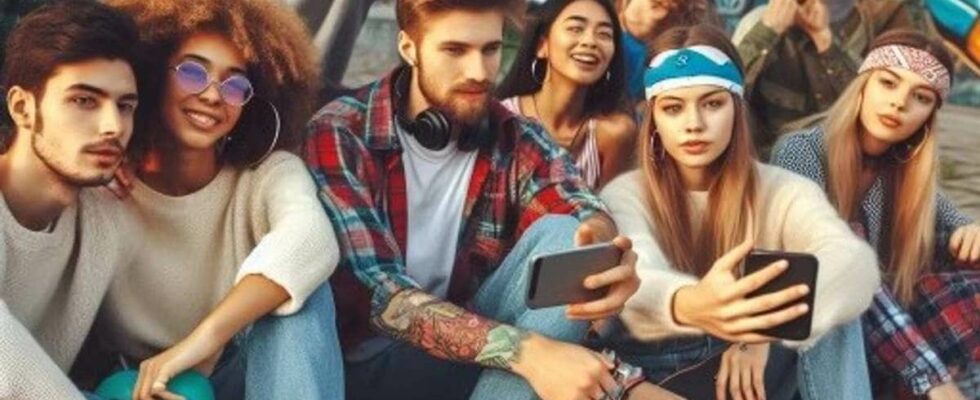The case in summary: Research has examined how the AI tool Dall-E 3 creates images of teenagers, and found worrying common features. The pictures show well-dressed, slim and beautiful young people from the middle class, with perfect skin and extraordinarily thick and shiny hair. Dall-E avoids generating images of overweight teenagers in order to have a positive approach, which is considered problematic. Although there is an experimental emphasis on ethnic and gender diversity, the images are not diverse and the young people are strikingly alike. The young people are always happy, and engage in middle-class leisure activities that are valued by society at large. There are no images of tired teenagers, teenagers working, or teenagers who appear to be in lower social classes. The summary is made by an AI service from OpenAI. The content is quality assured by news’s journalists before publication. – The AI images create teenagers who are not only strikingly beautiful, but almost unearthly beautiful, says Professor Gunhild Kvåle at the University of Agder. She has participated in a research project that has investigated how the AI tool Dall-E 3 creates images of teenagers. They found that the images have several common features. Some of them give cause for concern. The image tool DALL-E creates non-neutral glossy images of young people. Researchers at UIA believe the reason is that ChatGPT will not be offensive. Photo: UiA Can you tell the difference between real and fake photos? At the bottom of the article, you can test yourself. Well-dressed young people from the middle class The researchers have looked at the image tool Dall-E which is built into ChatGPT. According to Kvåle, the tool creates non-neutral gloss images. – All the young people are slim, beautiful and have perfect skin. The hair is not only thick and shiny, but it is extraordinarily thick and shiny. Researcher Gunhild Kvåle at UIA. She has participated in a research project with a Swedish colleague, about what image the AI tool Dall-E creates of teenagers. Photo: UIA Much of the reason for this is that ChatGPT will avoid being offensive, explains Kvåle. – I tried to generate images of overweight teenagers. Dall-E did not want to do that, citing that it wanted a positive approach. She believes it is problematic that there is a rule that slim and beautiful teenagers are the only variety we can generate images of. Seeing that it’s fake At Dahlske viderende skole in Grimstad, we meet four students and show the AI-generated image of the young people. For Sigrid, Emil, Even and Dina, there is no doubt that this is a fake picture. – They are often completely white and have no contrasts in their faces. The only thing that distinguishes the people is almost only the color of their beards, says Emil. But when AI images get better and better every day, the students agree that the representation of youth can cause problems.⚠️ This image is AI-generated by the way. – I think the AI robot should be able to create images that express a normal class, says Emil (15). – The fact that everyone is slim and pretty is a bit silly and can influence young people, says Sigrid (16). – It gives a wrong picture of what people look like. It is problematic if this makes people not think they look good enough, says Even (18). – It creates a kind of body pressure and a kind of standard that is not possible for everyone to maintain. So I don’t think it’s very good, says Dina (16) Pictures that lack diversity The findings show that DALL-E is on the one hand concerned with ethnic and gender diversity, while on the other hand the pictures are not very diverse. – The young people in the photos are strikingly similar. Everyone wears jeans and Converse shoes. They have the same style and make-up, and no one has acne, says Kvåle. She explains that it is both an experimental emphasis on diversity in terms of ethnicity, but at the same time an extremely conformist version of teenage life. The video was made with the AI tool Sora, a new service from OpenAI. It looks realistic, but if you look closely, you can notice that the woman’s legs suddenly switch places. Often the young people are busy with a middle-class leisure activity. Everyone is happy in the pictures, no one is sad. They engage in activities that are valued by society at large. – They are often in an urban park or in a library where they do homework or participate in artistic activities, says Kvåle. However, she says that there are no pictures of teenagers working, being tired, or teenagers participating in socially problematic activities. Test yourself! Which of these images are real, and which are AI-generated? Published 13.10.2024, at 16.26
ttn-69
AI tools create unrealistic images of teenagers – news Sørlandet – Local news, TV and radio

